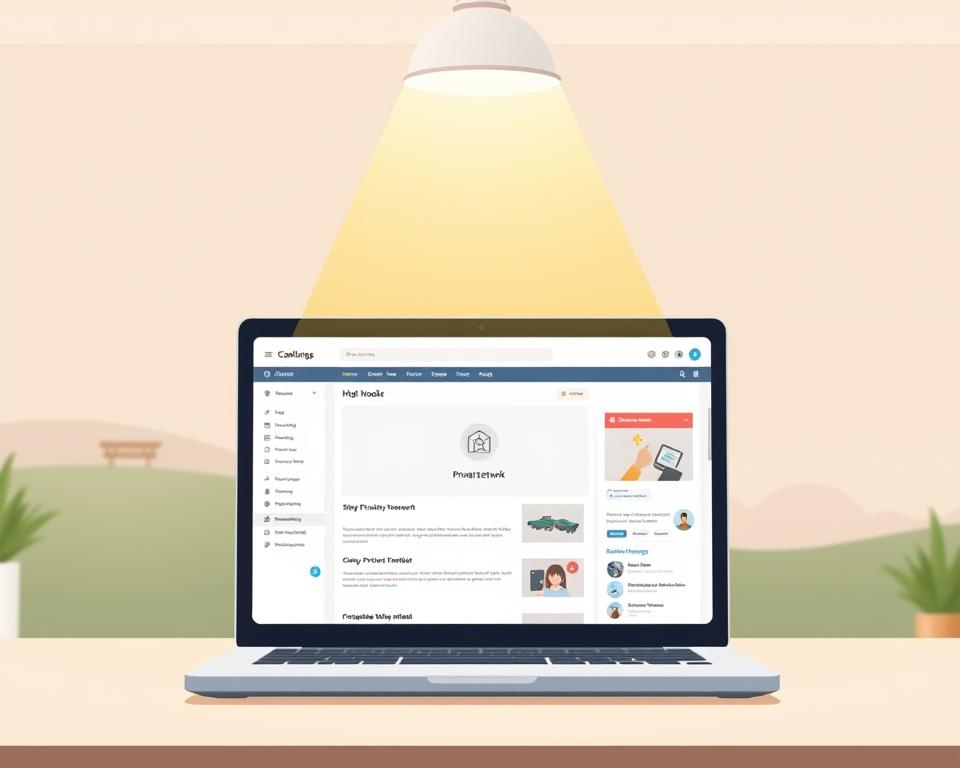Getting to Know Private Blog Network Backlinks
Did you hear that roughly three in five SEO pros leverage private blog network backlinks? What makes a PBN so alluring is its ability to amplify a site’s authority. Consequently, search engines may reward you with improved rankings. Yet, what truly defines a Private Blog Network in the SEO world? While PBNs promise swift SEO wins, they present major perils. Those dangers include harsh Google penalties. We’ll unpack what blogger network are and why so many SEOs can’t resist them.
Defining a PBN
A PBN comprises multiple sites set up to generate private blog network backlinks. Its goal is to boost rankings by channeling link authority from the network to your main site. By leveraging expired domains with lingering trust, PBNs present a convincing front to crawlers.
A PBN’s intent is straightforward. Marketers employ them to amplify their digital footprint. They do this by:
- Getting valuable backlinks to enhance rankings.
- Controlling the quality and relevance of these backlinks.
- Fostering a web of sites that exchange links in a natural-looking manner.

How do Private Blog Network Links Work?
PBN links work by creating private blog network backlinks that mimic natural links. Each PBN link is engineered to deceive crawlers into thinking it’s a genuine vote of confidence.
The process involves carefully chosen keywords and domains within a network of blogs. Yet despite potential instant gains, the method carries grave dangers.
Backlinks should be cloaked within credible, value-driven articles to avoid detection.
The Advantages of Using Private Blog Networks
PBNs provide clear perks for link-building strategists. One of the primary benefits is the immediate control over backlinks.
Expired domains give you a head start on link authority.
They empower you to weave keyword-optimized anchors across your network.
The Risks Associated with Private Blog Networks
PBNs carry significant risks that every SEO strategist must weigh. A major concern is the risk of Google penalizing websites that use these networks.
PBN vs. Outreach
Conventional outreach can be slow and uncertain. They eliminate the reliance on third-party permissions.
How to Run a PBN Safely
Effective pbn management demands careful attention and adherence to best practices. Begin with thorough due diligence when purchasing expired domains.
Identifying PBN Links on Your Website
Spotting PBN links on your site is key to keeping your domain reputation healthy.
| Indicators of PBN Links | Description |
|---|---|
| Low-Quality Domains | Links from domains with poor authority or less than optimal rankings. |
| Irrelevant Content | Links embedded in content that does not match your site’s niche. |
| Suspicious Anchor Text | Repetitive or irrelevant anchor text patterns. |
| Thematic Similarity | Lack of a coherent theme among linking pages and domains. |
Using Google’s Disavow Tool
- Identify harmful PBN backlinks through thorough analysis.
- Create a disavow file correctly, listing specific URLs or domains to disavow.
- Upload the disavow file to Google Search Console.
Ethical Link Building Alternatives
High-quality content and influencer collaborations also drive organic links.
PBN Misconceptions
Private Blog Networks (PBNs) are often misunderstood, affecting both new and seasoned SEOs.
Where PBNs Are Headed
| Factor | PBNs | Future SEO Practices |
|---|---|---|
| Content Quality | Low emphasis on genuine content | High emphasis on high-quality, valuable content |
| Risk Factor | High risk of penalties | Lower risk with authentic practices |
| User Engagement | Limited engagement | Enhanced user interaction and loyalty |
| Sustainability | Unsustainable in the long term | Focus on sustainable growth |
The Final Word
However, the pitfalls and penalties often outweigh the benefits.
